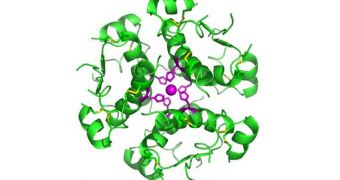A recent investigation conducted on unsuspecting lab mice has revealed that administering a spoonful of sugar to diabetes patients may in fact be one of the best way to address the disease.
In the new experiments, researchers looked at how much glucose was used up in pancreatic cells that produce insulin. The team also kept track of the effects that glucose consumption pattern had on the cells, and their findings are surprising.
It would appear that there is a direct correlation between how much sugar these cells consume and the speed at which they reproduce. More sugar equals more cells, researchers say, and this finding goes against many things experts held for granted when it comes to diabetes.
What the research team studied was in fact sugar-fueled cell growth. Knowing more about this process may come in very handy in the future, as experts are working towards discovering new types of cures for type I and type II diabetes.
Details of the new research appear in the April 6 issue of the esteemed medical journal Cell Metabolism, Science News reports. Scientists say that new therapies could allow them to keep the toxic effect of high blood sugar away from the patients.
At the same time, they would take advantage of the restorative properties that sugar has on insulin-producing pancreatic cells. However, the pathway underlying beta cell production is not yet known.
Additional investigations of the effects of sugar on the pancreas are needed before anything else, experts agree. It's not “a simple question to unravel. There are just so many moving parts,” says Juvenile Diabetes Research Foundation regeneration director Patricia Kilian, quoted by Science News.
“Beta cells, contrary to expectations, do have a regenerative capacity. It’s slow. It’s weak. It may be defective in diabetics, but it’s there,” says Yuval Dor, a development biologist at the Hebrew University of Jerusalem, and also one of the two leaders of the new research.
Investigators say that the same type of therapies will allow them to take on diabetes could also allow them to help patients who just received transplants of pancreatic islet cells. In many instances, these transplants do not succeed on account of the fact that the pancreas is not strong enough to handle this.

 14 DAY TRIAL //
14 DAY TRIAL //